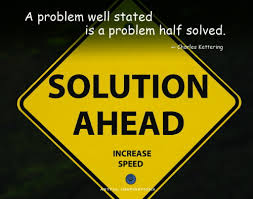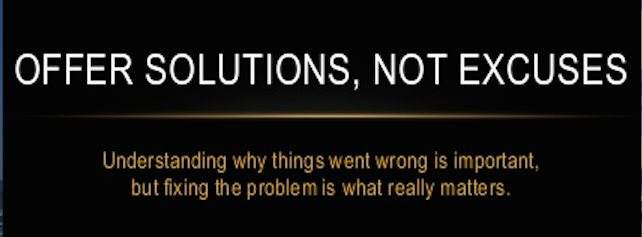It’s NOT NICE to fool the American People!
Starting back when public schools were at an historical peak of performance, the public began hearing the system is failing. The Outcome-Based Theory was written into law forcing practices in classrooms, ignoring the objections of many parents, teachers, and students. Three decades later? It’s time to admit the theory upon which the nation based education reforms laws failed to produce reform.
And it is time for your crucial voice and mine to join together in ending the attacks on our public school system.
The political dismantling of public education is masquerading under the guise of education reform law. But it isn’t too late to undo what has been done. On the contrary, this is the perfect time to set federal education law straight. #ESEAreauthorization2022
The Crucial Voice of the People is more than a book title. It is what is needed to stop the political assault on our public education system.
Federal K-12 education law is a national problem.
 Take Action Knowing That The Only Political Influence More Powerful than Money is We the People.
Take Action Knowing That The Only Political Influence More Powerful than Money is We the People.
Think, and trust your own common sense!
Getting involved in the political quagmire created by the Education Oligarchy isn’t glamorous, but it is necessary.
And it’s important to understand what the problem is with our laws.
Short answer: Because laws cement in place principles that guide school resources, the school reform philosophy behind laws like No Child Left Behind, and now the Every Student Succeeds Act (ESSA), need to be based on effective principles that work to improve schools.
And for every dollar pocketed by the profit-driven education industry for things that don’t work, there is one less dollar to provide resources for children and decent wages for the multitude of worker-bees actually in the schools doing the real work of educating children.
Even shorter answer; where laws direct us to go, so goes the money. Are the laws working towards what parents desire? And what teachers need? And what about meeting the students needs?
No Child Left Behind, and now its revision called the Every Student Succeeds Act (ESSA), has teachers and parents pushing children to make standards, testing, and accountability systems “work.”
Here’s why those false education reforms have NOT worked:
- Setting standards continues to be the laws’ first step. Spending money on rewriting standards and NOT on the resources to have “kids ready to learn” is NOT reform.
- The whole pseudo-reform mantra revolves around test scores that don’t correlate with a better education. Test scores don’t identify great education practices or focus resources on having “teachers ready to teach.”
- Accountability cannot reasonably be based on test scores (outcome-based) without first addressing the learning conditions (“materials to do the job”) under which we are asking teachers to teach and students to learn.
TO MAKE PROGRESS IN THE U.S. with true education reform, the country needs all of us to do what we can when we can.
“Young powerfully reminds us that we, America’s citizens, are the ultimate source of political power and public policy in our democracy. We, the people, need to learn about what ‘reform’ policies have been imposed, what’s wrong with them, and how they need to be changed.” Gary Ratner, Director of Citizens for Effective Schools
Embrace Solutions! Imagine,…What If...
Want to know more about The Crucial Voice of the People and the perspective from which it is written, please read its preface. If you’d like to read more about the history of education reform in the United States, please read this journal article.
Thank you for your interest. Enjoy!




“+Material to do the job” is not required. this part should be “=Well educated young adults”. Unless those materials speak of the most basics such as buildings, paper & pencils. Materials help make an education easier to do, better and faster they do make it a good one.
In addition to what Victoria pointed out, I would like to add that materials DO make a difference, and for some students are crucial. If we were all auditory learners, then we wouldn’t need materials, we could just listen to lectures. Unfortunately, one with even a rudimentary understanding of neurobiology knows this isn’t the case. Sorry to disappoint you Albert, but materials far more extensive than basic facilities, paper, and pencils are essential to ensure the equality in education we strive for…and there is a body of research on learning to support this claim.
“…essential to ensure the equality in education we strive for…” – music to my ears! Thank you.
Thank you for commenting.
Yes, “Materials to do the job” does refer to basic “tools” – buildings included. In poorer communities like the one I live in, my kids schools back in the mid to late 90’s did not have any air conditioning or even fans to go around – this is a desert region. It was so hot in the old two story buildings, the kids just laid over their desks sweating. My daughter got so hot once it made her vomit and there were too few drinking fountains so teachers stood over them limiting the time they could drink (and they couldn’t have drinks in class?). They would return home on those days showing the dark circles of dehydration. Plus there was the usual – no school books to take home and no science equipment provided in elementary – so little to no science (teacher dependent – luck!).
The chalk board that I wrote the formula on was too small to add the other half of the equation. I like how you see it ending. In my book I ended it with
= Equal Opportunity for Education
The full array of basics, well done, was all I expected. I consider that a fair shot at life. My kids were always going to be fine; we filled in the gaps as best we could. It’s the others I saw that society will pay a larger price for because of not having educated them well – only because what the kids needed wasn’t provided. Equal opportunity matters.
We are all in this together. Good to hear that you have a concern for all kids, a commons issue–this equity question. Money does not equal a good education but without a basic level of funding, the quality will not be there on a consistent basis. The USA is one of the few nations that do not Andreas Schleicher, who runs the OECD’s international education assessments, shared with the New York Times, “The vast majority of OECD countries either invest equally into every student or disproportionately more into disadvantaged students. The U.S. is one of the few countries doing the opposite.” The current additional funds needed to do the high stakes testing is most disturbing to me. I am AGAHST, an Angry Grandparent Against High Stakes Testing!
We should all be AGAHST! Thank you for your work on this most important issue. We need more grandparents like you. Best.
have just finished reading your excellent articles “Thirty Years Adrift on an Ocean of Reforms.” They truly resonated with me.
I was an elementary teacher and administrator from 1966 until 2007 with a couple of years off in the middle. I spent a total of 39 ye3ars in the profession. I was also a personal friend of Gerald Bracey, whom you quote a couple of times.
You state that the school system you attended was mediocre. You mention that the commission that wrote “A Nation at Risk” found four areas in need of improvement: content, expectations, time, and teaching. I would like to suggest an area of need that I have never seen mentioned in articles such as yours or in any other highly critical articles about education that permeate the media and the political atmosphere of recent decades.
The men and women serving as school administrators, from the level of Assistant Principal to the level of Superintendent, in my experience, do not possess the level of commitment, ability, achievement, or intelligence needed to prevent mediocrity from being pervasive in public education.
William Deresiewicz has written the following in his book, “Excellent Sheep.”
“The contemporary meritocracy…in all its glory is presiding over an era of unprecedented national decline…” “Its ethos is in fact, by definition, one of self-advancement: not duty or responsibility, not character or even leadership, but individual aggrandizement, a single-minded focus on the self and its success.” “And yet the meritocracy believes in its own… superior virtue. That’s what ‘merit” means, after all.” “…we might imagine in its place – ‘intelligence or aptitude,’ even excellence or achievement.”
This would describe very well many of the administrators I knew during my years in the profession and I am certain a case could be made that most educators in public schools are there primarily to better themselves rather than to facilitate the building of an excellent system of public schools. Most are like recent Democratic Presidential candidates (Gore, Kerry, Clinton, and Obama), very ambitious but lacking any purpose beyond getting nominated and elected. Administrators view success as getting and keeping administrative positions not as doing the job or bettering the profession.
Well said and thank you for saying!
What you write is why I coined the term “Adminimal” to describe 99.99% of the administrators out there. Minimal thinkers and animal-like abilities to follow and implement the latest malpractices. Without critical thinking capabilities, without being able to analyze the harmful effects of those malpractices, the adminimal is content to force others, through their “authority”, to do the dirty work. And to top it off they make the “big” bucks in the education hierarchy.
Insanity is as inanity does. And adminimals are quite inane.
When it comes to the older administrators, they should definitely have been able to recognize educational malpractice. Now that we are into the next generation of teachers and administrators taught by and under the standardization philosophy, I’m not sure they are even aware. ….scary.
I’m especially enthusiastic about helping our students be ready to learn: no more hunger, no more homelessness, no more paralyzing stress from violence.
To do all that you mention here, the Every Student Succeeds Act of 2015 needs to be repealed and replaced with an Act similar in substance and character to the Elementary and Secondary Education Act of 1965.
YES! When I was writing my book about school reform and how it invaded and devastated the lowest-income schools in our district, it dawned upon me one day that the money first set aside to “help” our poorest students has now been fully hi-jacked by TEST companies.
Do you remember, Vicki? When we went to Albion High School all the Blacks would sit in the back of the room and melt crayons on the radiator. Hahaha!
I don’t recall that and with the last name of Young and alphabetical seating, I was usually in the back of the room myself….It takes more than a comment I find offensive to make me block it.
We need an open discussion in this country about race, class, and education. Powerful civil rights groups have done children of all races a huge disservice by pushing the Every Student Succeeds Act into law.
The one overwhelming thing I see from “education reform” is educators. Until educators are at the table being part of the solution, nothing will change.
I totally agree. While the country sees educators, parents, and the students as the problems, some of us see them as the solutions. You aren’t alone. So I think it is up to people like us to build the table where the solutions will feel welcomed. 🙂
Poignant, spot-on messaging, Vicki! Keep on pushing!!
WO
Hello from Oregon. We are starting to lay plans for making a positive impact on public school policy as we vision life after the pandemic. Lots of opportunities and challenges. The Oregon Public Education Network is making an impact against great odds (e.g.– astroturf reform groups that hold undo influence in the decision making process, dark money from predatory philanthropists, zombie programs that just keep going and chewing up resources while not doing anything of importance, etc. We need to build critical mass in order to reach the tipping point where WE The REAL PEOPLE take back control. Hang on for this is going to be a marathon!
Good to hear that the Oregon Public Education Network is getting in shape for the marathon!
I’m lacing up my sneakers.
😉
I gave up running after my wrestling days at the Univ. of Idaho! Never more!! However, evidently I back into the race so I’m glad to join you.